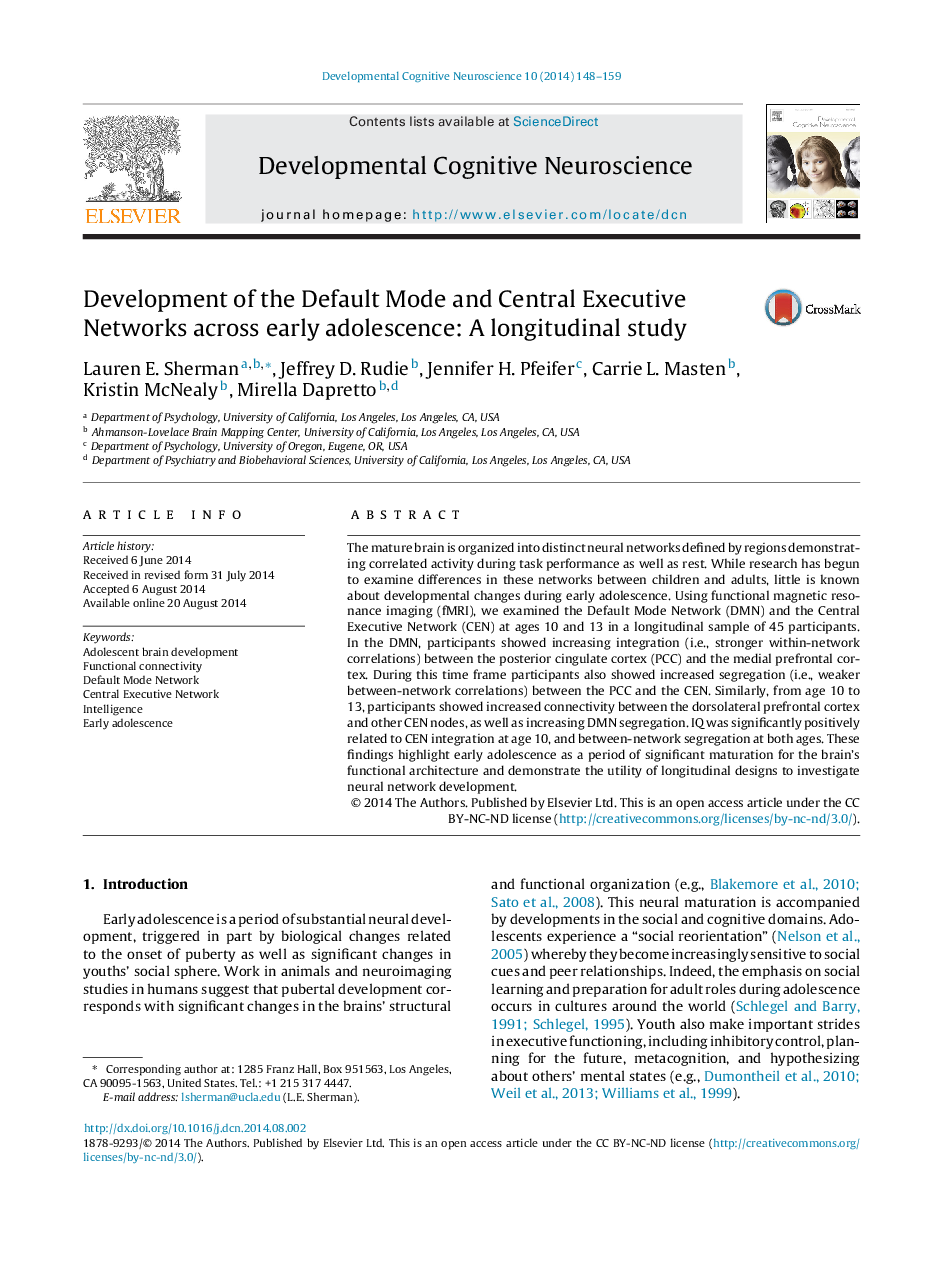| Article ID | Journal | Published Year | Pages | File Type |
|---|---|---|---|---|
| 4316617 | Developmental Cognitive Neuroscience | 2014 | 12 Pages |
•We examined functional connectivity in Default Mode and Central Executive Networks.•We examined the development of these functional networks in a longitudinal sample.•Each network developed stronger internal connectivity from age 10 to 13.•The networks also became increasingly anticorrelated with one another over time.•IQ related to level of within-network connectivity and between-network segregation.
The mature brain is organized into distinct neural networks defined by regions demonstrating correlated activity during task performance as well as rest. While research has begun to examine differences in these networks between children and adults, little is known about developmental changes during early adolescence. Using functional magnetic resonance imaging (fMRI), we examined the Default Mode Network (DMN) and the Central Executive Network (CEN) at ages 10 and 13 in a longitudinal sample of 45 participants. In the DMN, participants showed increasing integration (i.e., stronger within-network correlations) between the posterior cingulate cortex (PCC) and the medial prefrontal cortex. During this time frame participants also showed increased segregation (i.e., weaker between-network correlations) between the PCC and the CEN. Similarly, from age 10 to 13, participants showed increased connectivity between the dorsolateral prefrontal cortex and other CEN nodes, as well as increasing DMN segregation. IQ was significantly positively related to CEN integration at age 10, and between-network segregation at both ages. These findings highlight early adolescence as a period of significant maturation for the brain's functional architecture and demonstrate the utility of longitudinal designs to investigate neural network development.
